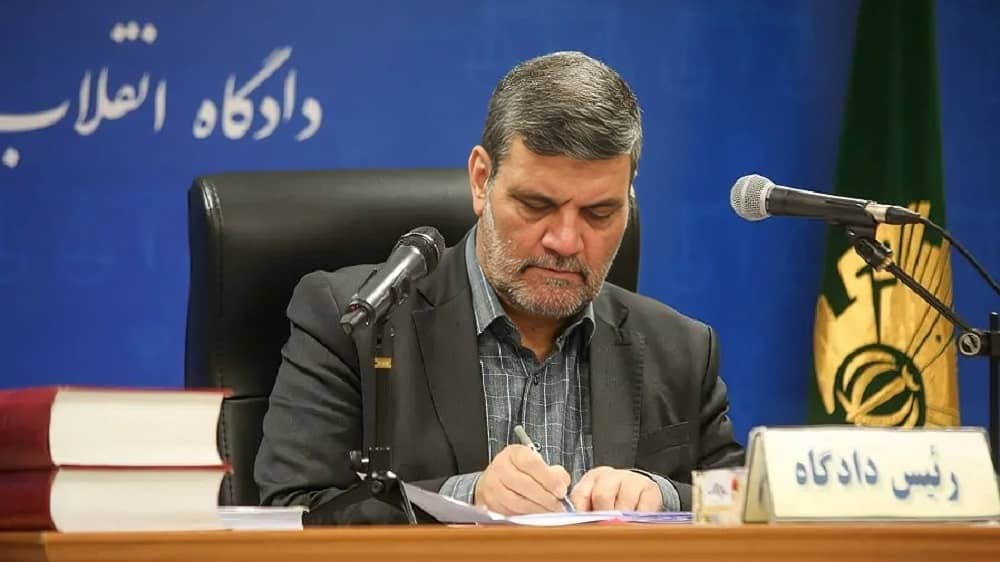
In the early hours of January 23, a grim chapter unfolded within the walls of Ghezel Hesar Prison. Mohammad Ghobadlou, a protester from the 2022 uprising, and Farhad Salimi, a Kurdish activist, met their untimely demise at the hands of the Iranian judiciary.
The architect of their fate, Judge Abolghassem Salavati, known infamously as the “Judge of Execution,” signed their death warrants, marking yet another chapter in his notorious career.
Salavati’s reputation extends far beyond Iran’s borders. His role in the sentencing of numerous American and Western citizens, often used as leverage in Iran’s geopolitical maneuvers, has drawn international ire. Facing sanctions from the European Union and the United States in 2011 and 2019, respectively, Salavati’s human rights abuses are well-documented.
The scale of Salavati’s transgressions is staggering. He has denied legal counsel to at least 229 defendants, subjected 166 individuals to solitary confinement, restricted contact for 104 defendants with their families, and inflicted mental and physical torture on 46 individuals. Unabashedly embracing his moniker, Salavati turns death sentences into a perverse form of pride.
Salavati’s personal life mirrors the chaos of his professional one. His wife, Parvin Shiri, retired from a mental health facility at age 40, reportedly distressed by her husband’s gruesome role in the judiciary.
Environmental Activist Alleges Jail Torture for Forced Confessions
Niloufar Bayani, a detained environmental activist in #Iran, has said in a court sessions headed by judge Salavati that she has repeatedly been attacked&threatened by authorities&was forced to make confession. pic.twitter.com/QqIUo9oI35— NCRI-FAC (@iran_policy) February 5, 2019
Salavati’s journey to infamy began in Eslamabad-e-Gharb, Western Iran, with no record of legal education or qualifications. His rise to prominence was marked by his role in the public show trials following the contentious 2009 presidential election in Iran. High-profile figures and grassroots protesters alike fell victim to his draconian judgments, with over a hundred demonstrators receiving lengthy sentences and at least six facing execution.
Salavati presided over several pivotal cases, notably the trial of Iranian-Swedish doctor Ahmadreza Djalali, where he pronounced a death sentence unchangeably. In the Ruhollah Zam case, Salavati sentenced him to death on 17 charges, leading to Zam’s execution despite his French residency. He denied environmental activists the right to choose their lawyers, sentenced Narges Mohammadi to ten years in prison, and handed down the death penalty to Mohsen Amir-Aslani for religious interpretation.
Iranian-Dutch citizen Zahra Bahrami was executed under drug trafficking charges, a move to deflect international scrutiny from her participation in the 2009 protests. Omid Kokabi, a promising physics student in the U.S., received a ten-year sentence for alleged espionage.
For decades the crimes of the Iranian regime have been met with impunity.
Condemnation of one of the perpetrators of #1988Massacre to life prison in a court of Stockholm is the first step. Raiisi &Khamenei and principal responsibles of genocide must be tried by justice pic.twitter.com/gqzq8lCGe1— Maryam Rajavi (@Maryam_Rajavi) July 15, 2022
Judge Salavati’s actions represent a blatant betrayal of humanity and humanitarian values. In a regime sustained by terror, figures like him thrive with alarming impunity. The international community’s condemnation, albeit significant, lacks concrete action, allowing such perpetrators to continue their reign of terror. There is a pressing need for universal diplomatic isolation of Tehran, contingent upon the cessation of the death penalty in Iran, to begin addressing this deep-seated human rights crisis.

MEK Iran (follow us on Twitter and Facebook), Maryam Rajavi’s on her site, Twitter & Facebook, NCRI (Twitter & Facebook), and People’s Mojahedin Organization of Iran – MEK IRAN – YouTu
